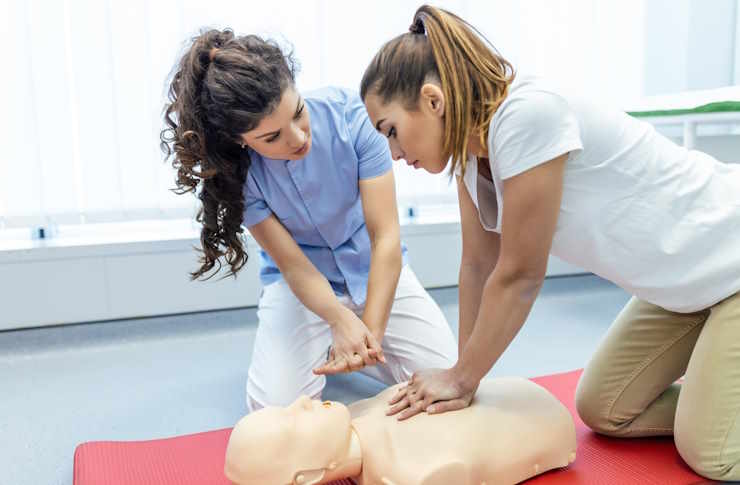Training for Medical Assistants: Launch Your Career
Medical assistant training offers a fast, hands-on path into healthcare by teaching both clinical skills and administrative tasks. Learn about program lengths, costs, accreditation, and essential competencies like EHR use, phlebotomy, and patient communication to pick the right program and accelerate entry into clinics, hospitals, and specialty practices. Explore certification options, externships, and financial aid to make an informed choice.

Medical assistant training develops the clinical and office-management skills needed to work effectively in a variety of healthcare environments. These programs are designed for people who want a practical route into patient care and clinic operations, whether as a short-term career move or a stepping-stone to further healthcare education.
Program Duration and Formats
The time it takes to complete medical assistant education depends on the credential and how the course is delivered. Certificate or diploma tracks are often compact, typically finishing in nine to twelve months, and appeal to students eager to enter the workforce quickly. An associate degree offers broader study and usually requires about two years of full-time attendance. Many institutions now provide flexible scheduling—night classes, weekend sessions, accelerated cohorts, and hybrid or fully online options—to accommodate working adults and caregivers.
Hands-on clinical practicum or externship hours, commonly part of accredited programs, add real-world experience and may lengthen the overall timeline. These supervised placements are important for developing practical skills and building professional connections with local clinics and hospitals.
Job Outlook and Career Paths
Medical assistants are in demand across outpatient clinics, primary care offices, urgent care centers, hospitals, and specialty practices like pediatrics, cardiology, and dermatology. The role is versatile: many employers expect staff to rotate between clinical duties (vital signs, specimen collection, assisting providers) and administrative tasks (scheduling, records, insurance verification).
Over time, medical assistants can specialize in areas such as phlebotomy, electrocardiography (EKG), billing and coding, or clinic management. With experience, it’s possible to move into supervisory positions, training roles, or administrative careers within healthcare operations. For individuals planning further education, the role also serves as a practical foundation for nursing or allied-health degree programs.
Essential Clinical and Administrative Skills
Quality training programs teach a mixture of technical tasks and office procedures. Common clinical competencies include taking vital signs, preparing patients for examinations, basic lab procedures and specimen handling, administering EKGs, and assisting during minor treatments. On the administrative side, instruction often covers appointment systems, medical charting, insurance processing, and introductory billing practices.
Soft skills are equally important. Clear communication helps coordinate care, attention to detail supports accurate documentation and safe sample handling, and empathy improves patient experience—particularly for anxious or vulnerable patients. As clinics increasingly rely on digital records, familiarity with electronic health records (EHR) and common practice management software is critical. Many programs also offer modules in ICD/CPT coding, phlebotomy, and EKG techniques to expand employability.
Typical Costs and What to Expect
Costs vary widely by program type, institution, and region. Here is a general comparison to help you evaluate options:
| Training Type | Typical Provider | Estimated Cost Range |
|---|---|---|
| Certificate Program | Community college or vocational school | $2,500 - $10,000 |
| Diploma Program | Trade or vocational school | $6,000 - $15,000 |
| Associate Degree | Community college | $10,000 - $25,000 |
| Online Program | Accredited online school | $4,000 - $20,000 |
Prices, rates, or cost estimates mentioned above are based on typical ranges and may change over time. Independent research is advised before making financial decisions.
Beyond tuition, plan for extras such as textbooks, uniforms, immunizations, background checks, clinical exam fees, and travel to externship sites. Many schools offer financial aid, scholarships, employer tuition reimbursement, and payment plans to help manage these expenses.
Choosing the Right Program
When evaluating programs, prioritize accreditation from reputable agencies like the Commission on Accreditation of Allied Health Education Programs (CAAHEP) or the Accrediting Bureau of Health Education Schools (ABHES). Accreditation signals that a program meets industry standards and often affects eligibility for national certification exams.
Review the curriculum to ensure it balances clinical training and administrative coursework and ask about the number of supervised clinical hours and the types of settings used for externships. Investigate faculty qualifications and seek outcome data—job placement rates, graduate testimonials, or local employer relationships can indicate program quality. Career services such as resume assistance, interview preparation, and employer networking can make the transition to work smoother.
Consider logistics: location, class schedules, in-person vs. online delivery, and total time commitment. If you aim to become certified, verify that the program prepares graduates for recognized credentialing exams offered by national medical assistant organizations.
Making the Most of Training
To maximize your prospects, practice both technical and interpersonal skills during training, pursue optional certifications (for example, in phlebotomy or EKG), and take advantage of externships to build a professional network. Keep your resume updated with practical experiences and seek part-time or volunteer roles in clinics to gain exposure before graduation.
Medical assistant training provides a practical, adaptable foundation for a meaningful healthcare career. Programs that combine hands-on clinical experience with administrative instruction prepare graduates to be productive team members and open paths to specialization and leadership. With thoughtful program selection and dedication to skill development and patient-centered care, you can begin a stable and rewarding career in a growing field.
This article is for informational purposes only and should not be considered medical advice. Please consult a qualified healthcare professional for personalized guidance and treatment.






